
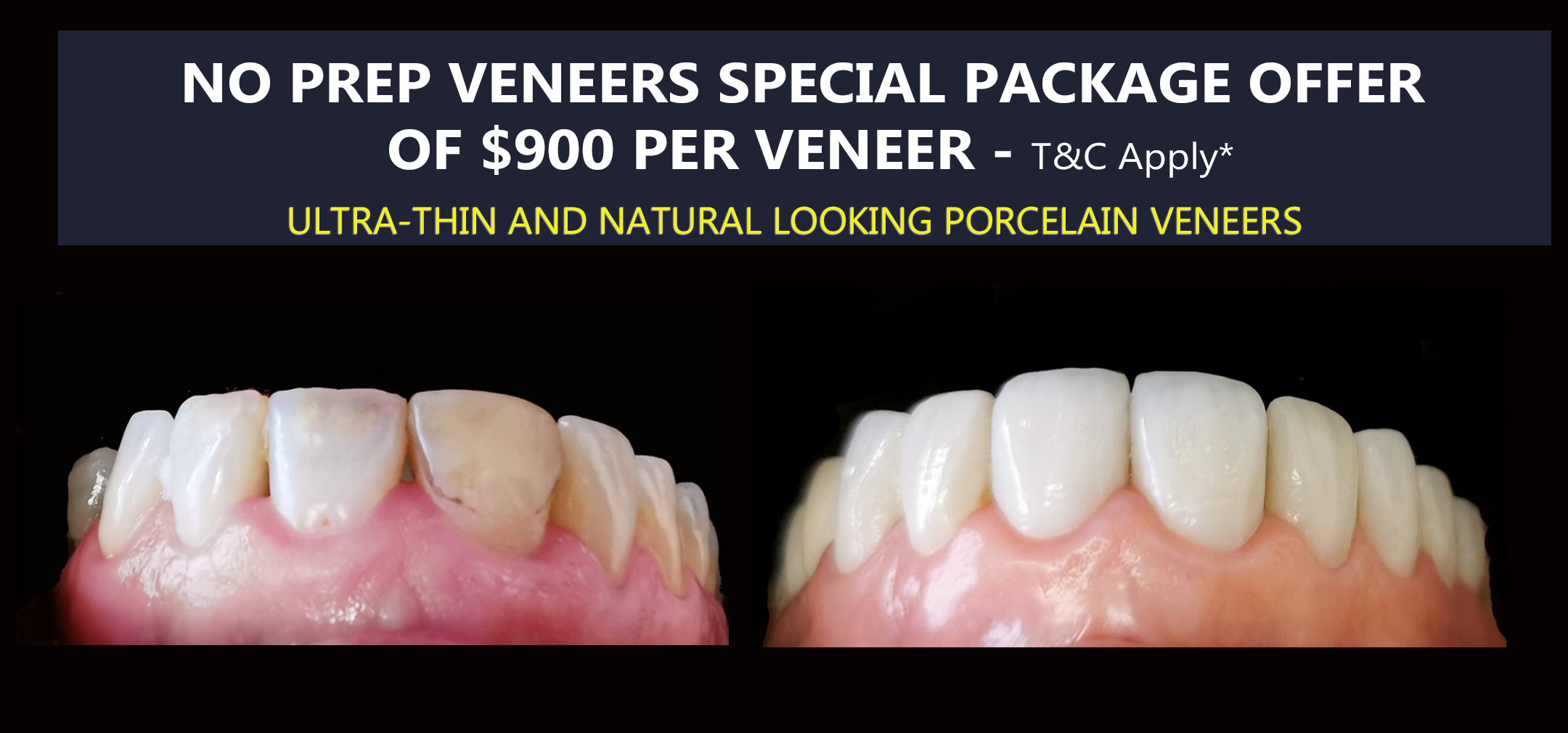 Review the important terms and conditions that apply to this offer.
Review the important terms and conditions that apply to this offer.
✨ Tetracycline stains are deep, intrinsic discolorations caused by early exposure to the antibiotic during tooth development
✨ These stains can appear gray, brown, or blue and are highly resistant to traditional teeth whitening methods
✨ Over-the-counter bleaching products typically offer little to no improvement on tetracycline-stained teeth
✨ Professional whitening may help in mild cases but often requires multiple sessions over many months with limited success
✨ Porcelain veneers are the most reliable solution to cover tetracycline stains, especially in moderate to severe cases
✨ Veneers provide instant, long-lasting improvement by masking the deep discoloration and enhancing overall tooth shape and alignment
✨ Veneers can restore confidence, self-esteem, and a whiter, more radiant smile that looks and feels natural
✨ At Vogue Smiles Melbourne, we specialize in conservative smile makeovers using No-Prep or Prepless Porcelain Veneers
✨ No-Prep Veneers require minimal to no enamel removal, which preserves natural tooth structure and avoids the need for temporaries
✨ Because of reduced clinical time, we can offer this treatment at a special discounted rate
✨ Vogue Smiles Special Offer: $900 per tooth (minimum of 10 teeth) for No-Grinding or Prepless Porcelain Veneers
✨ Combination treatments of veneers and crowns may be used in severe tetracycline cases to achieve full coverage and optimal bite alignment
✨ Free veneer consultations are available to assess your candidacy and design a smile that suits your goals and facial features
Cover Tetracycline Stains Using Porcelain Veneers
Tooth discoloration can occur for many reasons, but one of the most stubborn and emotionally distressing causes is tetracycline staining. This condition arises when the antibiotic tetracycline is taken during critical periods of tooth development—typically during pregnancy or early childhood. As the medication binds to calcium ions, it becomes embedded in the inner structure of the tooth (dentin) during mineralization. As a result, the staining is not just superficial but deeply ingrained, making it particularly resistant to traditional whitening treatments.
At first, tetracycline staining may present as a yellow or off-white tinge, but over time, it often progresses to grey, blue, or brown bands across the teeth. Unlike surface stains caused by coffee or tobacco, tetracycline discoloration becomes an intrinsic part of the tooth, which is why bleaching, whitening toothpastes, and professional whitening procedures often produce little to no improvement.
For many patients, these visible stains have deep emotional and psychological effects. People with tetracycline-stained teeth often feel embarrassed or ashamed to smile. They may avoid laughing or speaking in social situations, cover their mouths in photos, or refrain from forming close relationships due to fear of judgment. What should be a natural, joyful expression—smiling—becomes a source of anxiety and self-consciousness.
The inability to smile confidently can take a serious toll on one’s self-esteem. Some patients report struggling with social withdrawal, lowered self-image, or even depression due to the appearance of their teeth. It’s not uncommon for individuals with tetracycline stains to feel as though there is no solution, especially after failed attempts with teeth whitening products.
Fortunately, there is a highly effective cosmetic solution: covering tetracycline stains using porcelain veneers or crown depending on the degree of stain. Veneers are ultra-thin shells of porcelain bonded to the front of the teeth to conceal discoloration, improve shape, and restore a brilliant white appearance. Specifically tailored for each patient, porcelain veneers for tetracycline stains are designed to mask even the most severe staining with a lifelike, natural look.
Porcelain veneers not only cover the dark hues caused by tetracycline but also offer a durable, long-lasting solution that enhances overall smile aesthetics. Once the veneers are applied, patients often experience a dramatic transformation—not just in their appearance, but in their confidence and quality of life.
For those who have suffered in silence for years, achieving a white, radiant smile through porcelain veneers can be life-changing. Imagine going from hiding your smile to confidently sharing it in photos, meetings, and social gatherings. The emotional relief and boost in self-confidence that patients feel after undergoing veneer treatment cannot be overstated.
If you’re struggling with deeply embedded tooth discoloration due to antibiotics, the best path forward is to cover tetracycline stains using porcelain veneers or crown. It’s more than just a cosmetic solution—it’s a powerful way to reclaim your self-esteem, confidence, and joy in smiling again.
Find out below about this options and your other options

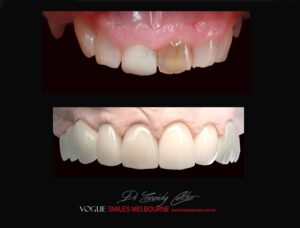
Conservative treatment with Porcelain Veneers for Tetracycline Stains
Tetracycline stains are among the most stubborn and difficult types of tooth discoloration to treat. They result from the use of tetracycline antibiotics during the early developmental stages of the teeth—typically between ages 3 and 10, or even in utero if taken by the mother during pregnancy. These antibiotics were widely prescribed starting in the 1950s, and while they proved effective in fighting infections, they unfortunately had a significant side effect: permanent tooth discoloration.
The first case of tetracycline-induced tooth staining was reported in 1956. Unfortunately, it took years to establish the connection, during which time many children developed visibly stained teeth. Unlike common surface stains from coffee, wine, or smoking, tetracycline staining occurs deep within the tooth structure, embedding itself into the dentin layer beneath the enamel. These intrinsic stains often present as yellow, gray, blue, or brown bands running horizontally across the teeth, becoming darker toward the tooth’s pulp and less visible at the surface.
Although tetracycline stains do not compromise the health or strength of the teeth, their appearance can have a lasting impact on one’s self-confidence and emotional well-being. Patients with moderate to severe staining often feel embarrassed, avoiding smiling in photos or social interactions. In severe cases, people report struggling with self-esteem issues for years—sometimes decades—believing there is no hope for a bright, attractive smile.
Thankfully, covering tetracycline stains using porcelain veneers offers a viable and transformative solution. Porcelain veneers are thin, custom-designed shells that are bonded to the front surface of teeth, effectively masking discoloration and enhancing overall smile aesthetics. They can restore the appearance of a clean, white, and naturally radiant smile.
However, treating tetracycline stains with veneers presents unique challenges. Because the discoloration lies deep within the tooth, and often varies in intensity, the dentist must carefully balance two critical elements in the veneer: opacity and translucency. The veneer must be opaque enough to mask the dark stains, but also translucent enough to mimic the light-reflecting properties of natural enamel. This requires a high level of technical expertise in both tooth preparation and ceramic fabrication.
In mild to moderate cases, traditional porcelain veneers for tetracycline stains are often sufficient. But in severe cases, more tooth structure may need to be removed to allow for a slightly thicker, more stain-blocking veneer. While minimal tooth preparation is always preferred, additional reduction may be necessary to achieve ideal results without compromising aesthetics.
Patients seeking a long-term solution should consult with a cosmetic dentist who has extensive experience in managing tetracycline-stained teeth. A comprehensive treatment plan, often beginning with a trial smile or mock-up, will ensure that the final result is both functional and beautiful.
If you’ve been living with the embarrassment of deep tooth discoloration, porcelain veneers for tetracycline stains can help you regain your confidence and enjoy a bright, youthful smile once again.
Severe Tetracycline Stain Treatment: Conservative Options vs Full Crowning
Tetracycline stains are among the most complex cosmetic challenges in dentistry. When the damage from this antibiotic is especially severe, even the most advanced traditional whitening methods prove ineffective—either from the beginning or after a period of wear—ultimately requiring retreatment.
In our practice, we prioritize long-term success when selecting cosmetic treatment options. For patients affected by tetracycline staining, our goal is not just an immediate transformation, but a solution that remains stable and beautiful for years to come. Every treatment plan is guided by the dual goals of preserving healthy tooth structure and achieving long-lasting aesthetic results.
A Patient’s Journey: From Disappointment to Transformation
Many patients living with deep tetracycline staining share a similar story. Like others with these distinctive gray or brown bands—caused by antibiotic use during critical stages of tooth development—one patient at our clinic had spent years trying over-the-counter whitening products, only to be continually disappointed. She later discovered what many don’t know: tetracycline staining is intrinsic, deeply embedded in the dentin, and resistant to all forms of external whitening.
The characteristic horizontal banding found in tetracycline-stained teeth often varies in intensity, depending on when the drug was administered during the patient’s development. Each band represents a different developmental phase of the tooth, further complicating treatment and requiring a custom-tailored approach.
Porcelain Veneers: The Conservative Yet Strategic Approach
Porcelain veneers remain a popular and effective choice for many cases of tetracycline staining. These ultra-thin, custom-crafted porcelain shells are bonded to the front of the teeth and are designed to mask deep discoloration while preserving much of the natural tooth structure.
However, veneers are not a one-size-fits-all solution. For severe stains, achieving full color masking may require thicker-than-usual veneers, or preparation into the dentin layer—potentially compromising the tooth’s integrity. This raises an important clinical and ethical question: Do we really need to cut away sound enamel to improve aesthetics?
Whenever possible, we pursue conservative treatments first. For moderate cases, no-prep or minimal-prep veneers may offer a beautiful solution without sacrificing healthy tooth tissue. These approaches are especially attractive to patients concerned with long-term tooth preservation.
Porcelain Crowns: A Comprehensive Solution for Severe Discoloration
When staining is extraordinarily dark or widespread, porcelain crowns may be the best—and sometimes only—restorative option. Unlike veneers, which cover just the front of the teeth, crowns encompass the entire tooth, offering the necessary thickness to fully block out discoloration and restore brightness.
Beyond aesthetics, crowns provide structural and functional advantages. They allow for optimal bite alignment and can address interproximal staining (the dark areas between the teeth), which veneers sometimes cannot fully cover. Thanks to our doctors’ extensive training and continuing education, we consistently achieve proper bite relationships and aesthetic harmony with full crown restorations.
Combining Veneers and Crowns for the Ideal Smile
In many cases, the most elegant and effective solution is a combination of veneers and crowns, strategically placed to match the smile line and meet individual cosmetic goals. This hybrid approach allows us to balance aesthetic coverage, tooth preservation, and bite function—delivering a result that is both beautiful and sustainable.
At our clinic, we are committed to delivering conservative, ethical, and enduring solutions. Whether using veneers, crowns, or a tailored combination of both, our priority remains the same: to help you rediscover your confidence through a radiant, natural-looking smile that will stand the test of time.
Depending on the severity of discoloration, there are several treatment options including vital and nonvital bleaching, micro abrasion, composite and porcelain veneers, porcelain crowns and sometimes a combination of them. The vital bleaching procedures cannot satisfactorily remove dark tetracycline staining. For decades, severe intrinsic staining has been often treated with crowns, but this supposes the aggressive elimination of dental structure. Currently, several types of all-ceramic systems have been developed to satisfy patients’ aesthetic demands.
Professional In-Office Whitening for Tetracycline Stains
Dentists do offer stronger whitening treatments that can sometimes help improve the appearance of mild to moderate tetracycline stains. In-office procedures use higher concentrations of bleaching agents—like hydrogen peroxide—that can penetrate deeper layers of enamel. When performed under the supervision of an experienced cosmetic dentist, these treatments can yield noticeable improvements.
- However, it’s important to set realistic expectations. Even with professional whitening:
- Multiple sessions may be needed over several months.
- Results are often gradual, not immediate.
- Complete stain removal may not be achievable, especially in severe cases.
Why Multiple Whitening Sessions May Be Necessary
Because tetracycline binds deeply into the dentin (the layer beneath the enamel), it often takes repeated whitening sessions to break up the discoloration. Patients with mild discoloration may begin to see results within 1–3 sessions, while those with more severe staining might require ongoing treatments over 6 months or more.
Even then, teeth may not reach a uniform shade of white. Instead, the goal of whitening in these cases is to lighten the overall appearance of the smile rather than achieve perfection.
Understanding the Limits – When Whitening Isn’t Enough
For many patients, whitening alone simply isn’t enough to restore confidence. Severely stained teeth may remain visibly discolored despite the best whitening efforts. In these cases, more advanced cosmetic options such as porcelain veneers or crowns may be recommended.
These restorations physically cover the stained teeth with a layer of durable, natural-looking porcelain, masking discoloration completely and delivering long-lasting aesthetic improvement.
Why Traditional Whitening Isn’t Always Enough
For most common stains (like those from coffee, red wine, or smoking), teeth whitening treatments — whether at-home or in-office — can lighten the enamel and restore a bright smile. But tetracycline staining is far more resistant.
Even professional whitening with strong bleaching agents may take several months to over a year to show results. For example:
- Typical whitening can take 4–6 weeks for surface stains
- Tetracycline-stained teeth may need up to 12 months of ongoing treatment
- Even after extended treatment, teeth may still retain a dull or uneven color
While in-office bleaching and custom trays with prescription-grade gel may help lighten tetracycline stains, they rarely achieve a truly white or even-toned result. And for many patients, this lengthy and uncertain process can be frustrating — both emotionally and financially.
What’s the Best Option for You?
If you’re concerned about tetracycline stains, the first step is to schedule a cosmetic consultation. An experienced dentist will evaluate the severity of your staining, discuss your aesthetic goals, and recommend a treatment plan that fits your budget and long-term expectations.
While teeth whitening can be part of the journey, it’s not always the final solution. For the most predictable and dramatic results, consider discussing porcelain veneers or crowns—proven methods for masking tetracycline stains and achieving a smile you’ll be proud to show.
The Proven Solution: Porcelain Veneers
When whitening isn’t effective enough, the most reliable and transformative option is to cover the discolored teeth with porcelain veneers.
Porcelain veneers are thin, customized shells made of medical-grade ceramic that are bonded to the front of the teeth. They are specifically designed to:
- Cover deep tetracycline stains completely
- Restore a uniform, naturally white smile
- Improve the shape, alignment, and texture of the teeth
- Last 10–15 years or longer with proper care
For patients with severe tetracycline staining, veneers offer the benefit of instant and predictable results, as opposed to ongoing whitening attempts with uncertain outcomes.
Veneers vs. Whitening: What’s Right for You?
- If your tetracycline staining is mild to moderate, your dentist may suggest trying professional whitening first. However, if your stains are deep, dark, or resistant to bleaching, veneers are likely your best option for a long-lasting and confident smile.
- During a cosmetic consultation, your dentist can evaluate your individual case and recommend a personalized plan. Some patients may benefit from a combination approach — whitening followed by veneers — to achieve the ideal result.
- Tetracycline-stained teeth can be frustrating and impact your confidence, but you don’t have to settle for a smile you’re unhappy with. While whitening may help in certain cases, porcelain veneers remain the gold standard for dramatically improving the appearance of deeply stained teeth.
- If you’re ready to finally achieve the smile you’ve always wanted, book a consultation to explore your options. Whether it’s whitening, veneers, or a custom smile makeover, your dream smile may be closer than you think.
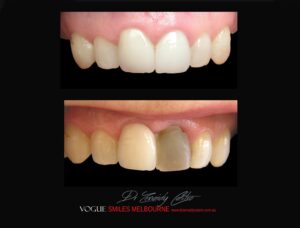
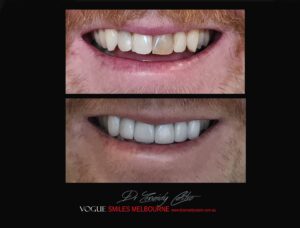
Begin Your Smile Transformation Today
Whether you’re preparing for a milestone event, stepping back into the professional world, or finally ready to smile with pride—there’s no better time to start your transformation. Let Vogue Smiles Melbourne help you reclaim the joy, confidence, and freedom that come with a radiant, worry-free smile.
Your dream smile is closer than you think. Trust your transformation to a dentist with over 3 decades of passion to Cosmetic Dentistry
Book Your Smile Makeover Consultation
???? Call (03) 9629 7664 | 0413 014 122
REQUEST AN ONLINE PERSONALIZED QUOTE ➤
REQUEST FOR A FREE TELECONSULTATION ➤


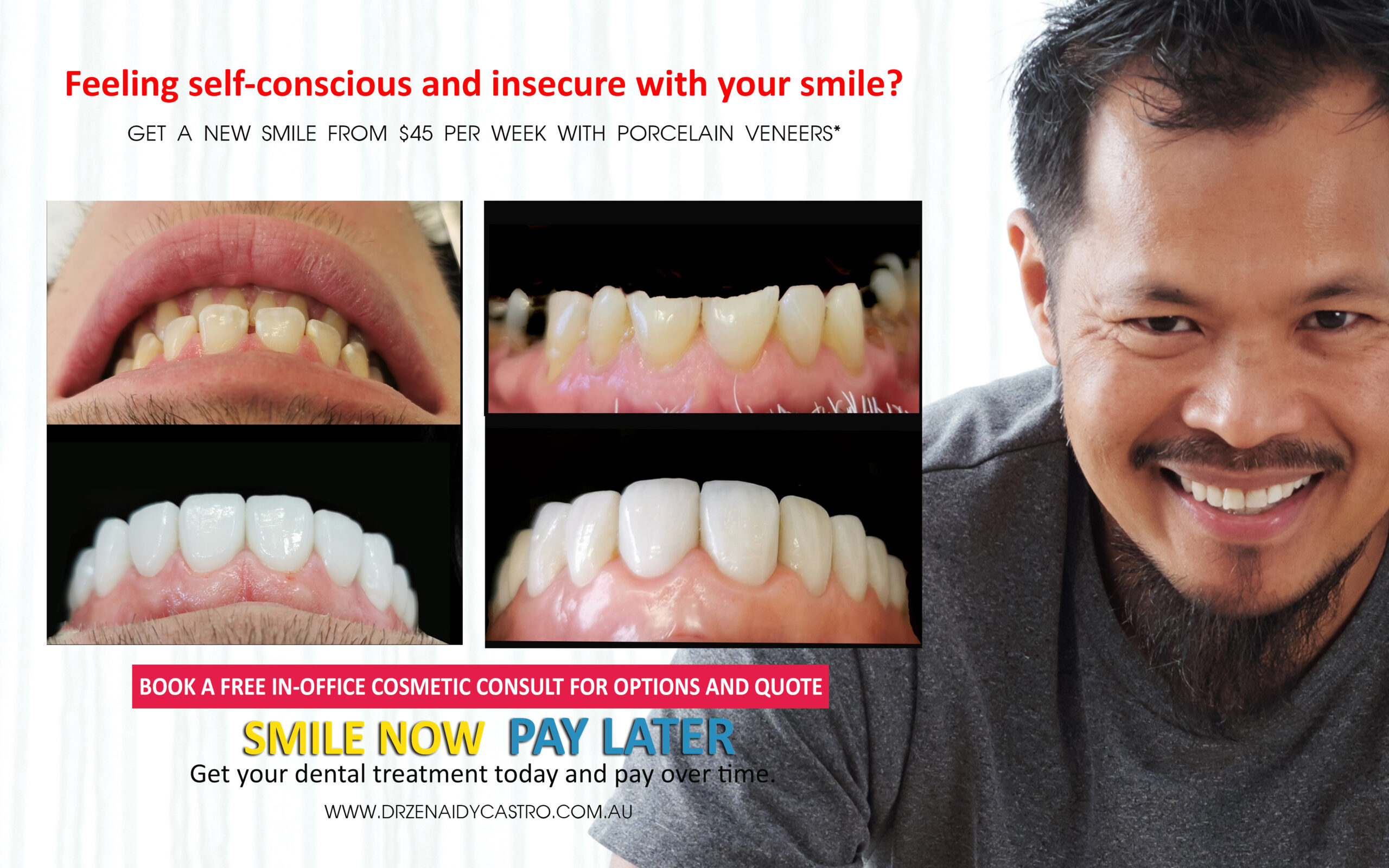
Disclaimer:
The information on this website is for information purposes only. Is not a substitute for a proper professional care and advice. Each patient’s outcomes, risks, potential complications, and recovery differ. Any dental procedure, minor or major, carries risks, some minor and some serious. Before and after images seen on our Social Media and website pages are our actual patient and have been published/posted with our patients’ permission. All of our patients photos are subject to Copyrights protection. We are strong believers in responsible aesthetics. Every cosmetic, medical, or dental procedure comes with its own set of risks and benefits. Cosmetic Dentistry results will vary from patient to patient. Call our office and book for an actual in-office consultation for us to assess if you are a good candidate for a particular treatment. All of our Specials and packages posted on this site are subject to terms, conditions and availability. The exact fee for a particular cosmetic procedure will be determined after a preliminary assessment distinguishing your unique personal needs and the type of work needed. The prices mentioned on any of our website as well as any mentioned payment plan by a third party source, are just a guide and is subject to change. Call the third party financing providers or visit their website for more info. Please call the office on 9629-7664 for further queries or clarification.




